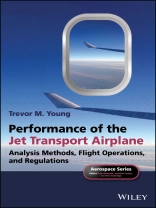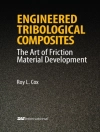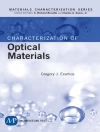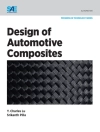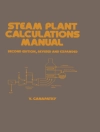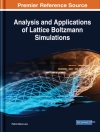Performance of the Jet Transport Airplane: Analysis Methods, Flight Operations, and Regulations presents a detailed and comprehensive treatment of performance analysis techniques for jet transport airplanes. Uniquely, the book describes key operational and regulatory procedures and constraints that directly impact the performance of commercial airliners.
Topics include: rigid body dynamics; aerodynamic fundamentals; atmospheric models (including standard and non-standard atmospheres); height scales and altimetry; distance and speed measurement; lift and drag and associated mathematical models; jet engine performance (including thrust and specific fuel consumption models); takeoff and landing performance (with airfield and operational constraints); takeoff climb and obstacle clearance; level, climbing and descending flight (including accelerated climb/descent); cruise and range (including solutions by numerical integration); payload–range; endurance and holding; maneuvering flight (including turning and pitching maneuvers); total energy concepts; trip fuel planning and estimation (including regulatory fuel reserves); en route operations and limitations (e.g. climb-speed schedules, cruise ceiling, ETOPS); cost considerations (e.g. cost index, energy cost, fuel tankering); weight, balance and trim; flight envelopes and limitations (including stall and buffet onset speeds, V–n diagrams); environmental considerations (viz. noise and emissions); aircraft systems and airplane performance (e.g. cabin pressurization, de-/anti icing, and fuel); and performance-related regulatory requirements of the FAA (Federal Aviation Administration) and EASA (European Aviation Safety Agency).
Key features:
- Describes methods for the analysis of the performance of jet transport airplanes during all phases of flight
- Presents both analytical (closed form) methods and numerical approaches
- Describes key FAA and EASA regulations that impact airplane performance
- Presents equations and examples in both SI (Système International) and USC (United States Customary) units
- Considers the influence of operational procedures and their impact on airplane performance
Performance of the Jet Transport Airplane: Analysis Methods, Flight Operations, and Regulations provides a comprehensive treatment of the performance of modern jet transport airplanes in an operational context. It is a must-have reference for aerospace engineering students, applied researchers conducting performance-related studies, and flight operations engineers.
Daftar Isi
Foreword xi
Series Preface xiii
Acknowledgments xv
1 Introduction 1
1.1 Definitions of Performance 1
1.2 Commercial Air Transportation 3
1.3 Jet Transport Airplanes: A Short History 4
1.4 Regulatory Framework 8
1.5 Performance-Related Activities 9
1.6 Analysis Techniques and Idealizations 12
References 14
2 Engineering Fundamentals 17
2.1 Introduction 17
2.2 Notation, Units, and Conversion Factors 18
2.3 Mass, Momentum, Weight, and Gravity 21
2.4 Basics of Rigid Body Dynamics 26
2.5 Basics of Fluid Dynamics 33
2.6 Further Reading 43
References 43
3 Aerodynamic Fundamentals 45
3.1 Introduction 45
3.2 Standard Definitions and Notation 45
3.3 Coordinate Systems and Conventions 53
3.4 Aerodynamic Forces and Moments 55
3.5 Compressibility 63
3.6 Boundary Layers 65
3.7 High Lift Devices 67
3.8 Controls for Pitch, Roll, and Yaw 71
3.9 Further Reading 75
References 75
4 Atmosphere and Weather 77
4.1 Introduction 77
4.2 International Standard Atmosphere 77
4.3 Non-Standard and Off-Standard Atmospheres 85
4.4 The Real Atmosphere 89
4.5 Weather 91
4.6 Stability of the Atmosphere 96
References 98
5 Height Scales and Altimetry 101
5.1 Introduction 101
5.2 Height Scales 101
5.3 Altimetry 104
5.4 Flight Levels, Tracks, and Airspace 111
References 114
6 Distance and Speed 115
6.1 Introduction 115
6.2 Distance 115
6.3 True Airspeed, Ground Speed, and Navigation 118
6.4 Speed of Sound and Mach Number 120
6.5 Dynamic Pressure and Equivalent Airspeed 121
6.6 Calibrated Airspeed 122
6.7 Indicated Airspeed 127
6.8 Relationship Between Airplane Speeds 128
References 130
7 Lift and Drag 131
7.1 Introduction 131
7.2 Airplane Lift 132
7.3 Airplane Drag 137
7.4 Drag Polar 143
7.5 Drag Polar Corrections 150
7.6 Lift-to-Drag Ratio 158
7.7 Minimum Drag Condition 162
7.8 Minimum Drag Power (Required Power) Condition 164
7.9 Minimum Drag-to-Speed Ratio Condition 166
7.10 Summary of Expressions Based on the Parabolic Drag Polar 169
References 171
8 Propulsion 175
8.1 Introduction 175
8.2 Basic Description of the Turbofan Engine 176
8.3 Engine Thrust 184
8.4 Fuel Flow and Thrust Specific Fuel Consumption 190
8.5 Thrust Control, Engine Design Limits, and Ratings 194
8.6 Thrust Variation 202
8.7 Fuel Flow and TSFC Variation 209
8.8 Installation Losses and Engine Deterioration 212
8.9 Further Reading 217
References 218
9 Takeoff Performance 221
9.1 Introduction 221
9.2 Takeoff Distances 222
9.3 Forces Acting on the Airplane During the Ground Run 227
9.4 Evaluation of the Takeoff Distance from Brake Release to Rotation 232
9.5 Rotation and Climb-Out to Clear the Screen Height 238
9.6 Empirical Estimation of Takeoff Distances 241
9.7 Evaluation of Rejected Takeoff Runway Distances 244
9.8 Wheel Braking 247
9.9 Takeoff on Contaminated Runways 252
References 255
10 Takeoff Field Length and Takeoff Climb Considerations 257
10.1 Introduction 257
10.2 Takeoff Reference Speeds 258
10.3 Takeoff Weight Limitations 261
10.4 Runway Limitations and Data 265
10.5 Operational Field Length and Runway-Limited Takeoff Weight 268
10.6 Takeoff Climb Gradient Requirements 272
10.7 Takeoff Climb Obstacle Clearance 274
10.8 Derated Thrust and Reduced Thrust Takeoff 277
References 280
11 Approach and Landing 283
11.1 Introduction 283
11.2 Procedure for Approach and Landing 284
11.3 Forces Acting on the Airplane During the Ground Run 287
11.4 Landing Distance Estimation 291
11.5 Empirical Estimation of the Landing Distance 297
11.6 Landing on Contaminated Runways 298
11.7 Flight Operations 300
11.8 Rejected Landing 307
References 308
12 Mechanics of Level, Climbing, and Descending Flight 311
12.1 Introduction 311
12.2 Basic Equations of Motion 312
12.3 Performance in Level Flight 315
12.4 Performance in Climbing Flight 319
12.5 Performance in Descending Flight 334
12.6 Further Reading 337
References 338
13 Cruising Flight and Range Performance 339
13.1 Introduction 339
13.2 Specific Air Range and Still Air Range Determination 340
13.3 Analytical Integration 345
13.4 Numerical Integration 351
13.5 Cruise Optimization Based on Aerodynamic Parameters 354
13.6 Best Cruise Speeds and Cruise Altitudes 360
13.7 Further Details on the Use of the Bréguet Range Equation 363
13.8 Influence of Wind on Cruise Performance 366
References 370
14 Holding Flight and Endurance Performance 373
14.1 Introduction 373
14.2 Basic Equation for Holding/Endurance 374
14.3 Analytical Integration 375
14.4 Numerical Integration 378
14.5 Flight Conditions for Maximum Endurance 379
14.6 Holding Operations 382
References 384
15 Mechanics of Maneuvering Flight 385
15.1 Introduction 385
15.2 Turning Maneuvers 386
15.3 Level Coordinated Turns 389
15.4 Climbing or Descending Turns 396
15.5 Level Uncoordinated Turns 398
15.6 Limits and Constraints in Turning Maneuvers 400
15.7 Pitching Maneuvers 403
15.8 Total Energy 404
References 409
16 Trip Fuel Requirements and Estimation 411
16.1 Introduction 411
16.2 ICAO Requirements 412
16.3 FAA Requirements 412
16.4 EASA Requirements 414
16.5 Trip Fuel Computational Procedure 416
16.6 Payload–Range Performance 418
16.7 Trip Fuel Breakdown and Fuel Fractions 422
16.8 Trip Fuel Estimation 424
16.9 Estimating Trip Distances (To Be Flown) 428
16.10 Transporting (Tankering) Fuel 429
16.11 Reclearance 430
16.12 Factors That Can Impact Cruise Fuel 432
16.13 Impact of Small Changes on Cruise Fuel 435
References 437
17 En Route Operations and Limitations 439
17.1 Introduction 439
17.2 Climb to Initial Cruise Altitude (En Route Climb) 440
17.3 Cruise Altitude Selection 443
17.4 En Route Engine Failure 446
17.5 En Route Cabin Pressurization Failure 450
17.6 Extended Operations 451
17.7 Continuous Descent Operations 454
References 455
18 Cost Considerations 457
18.1 Introduction 457
18.2 Airplane Operating Costs 458
18.3 Cost Index 461
18.4 Unit Energy Cost 468
References 474
19 Weight, Balance, and Trim 477
19.1 Introduction 477
19.2 Airplane Weight Definitions 477
19.3 Center of Gravity 481
19.4 Longitudinal Static Stability and Stabilizer Trim 485
19.5 Center of Gravity Control 490
19.6 Operational Weights and Dispatch Procedures 491
19.7 Performance Implications 494
References 496
20 Limitations and Flight Envelope 497
20.1 Introduction 497
20.2 Stall 497
20.3 High-Speed Buffet 502
20.4 Altitude–Speed Limitations 505
20.5 Key Regulatory Speeds 507
20.6 Structural Design Loads and Limitations 510
20.7 V–n Diagram (Flight Load Envelope) 512
References 520
21 Noise and Emissions 523
21.1 Introduction 523
21.2 Airplane Noise 523
21.3 Noise Regulations and Restrictions 526
21.4 Noise Abatement and Flight Operations 530
21.5 Airplane Emissions 532
21.6 Mitigating the Effects of Airplane Emissions 537
References 540
22 Airplane Systems and Performance 543
22.1 Introduction 543
22.2 Reliability Requirements for Airplane Systems 543
22.3 Cabin Pressurization System 544
22.4 Environmental Control System 548
22.5 De-Icing and Anti-Icing Systems 549
22.6 Auxiliary Power System 550
22.7 Fuel and Fuel Systems 551
References 559
23 Authorities, Regulations, and Documentation 563
23.1 Introduction 563
23.2 International Civil Aviation Organization 563
23.3 Aviation Authorities 565
23.4 Regulations, Certification, and Operations 567
23.5 Safety Investigation Authorities 571
23.6 Non-Governmental Organizations 572
23.7 Airplane and Flight Crew Documentation 573
23.8 Airplane Performance Data 577
References 578
A International Standard Atmosphere (ISA) Table 583
B Units and Conversion Factors 591
C coordinate Systems and conventions 597
D Miscellaneous derivations 601
E Trim and Longitudinal Static Stability 613
F Regulations (Fuel Policy) 627
G Abbreviations and Nomenclature 629
Index 645
Tentang Penulis
Trevor M. Young, University of Limerick, Ireland.
